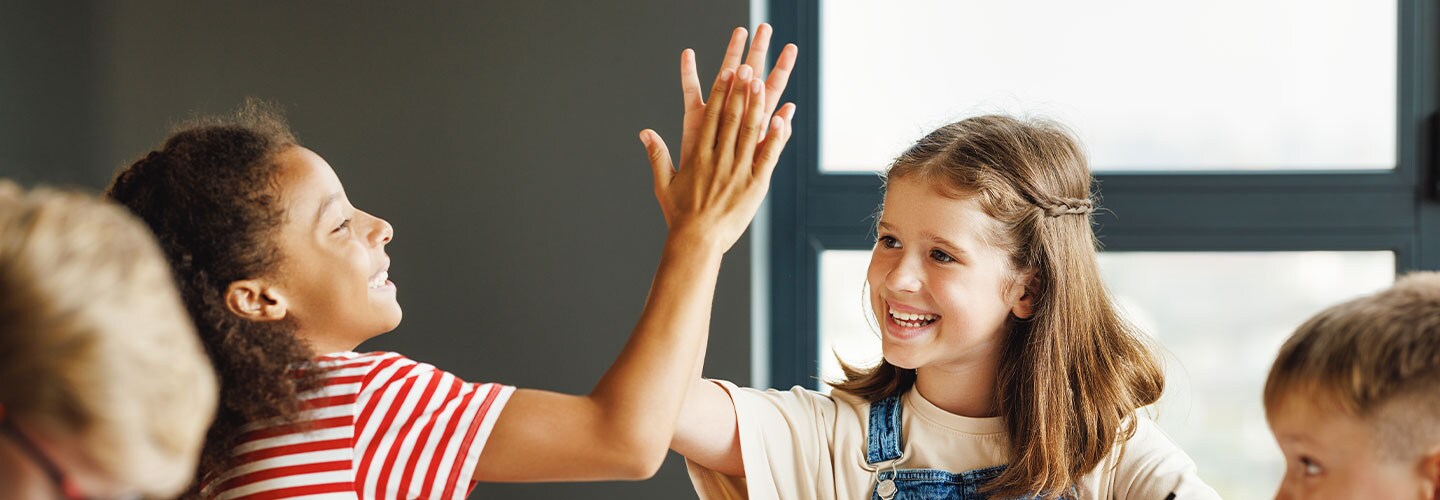
- Young learners
- Teaching trends and techniques
How can teachers encourage parents to get kids reading at home?
“Sharing a story with your child is one of the most incredible things you can do for them.” – The Book Trust.
Research shows that getting kids reading at home can increase their reading ability at school – and improve their overall well-being. Parents and guardians can make a big difference. But how can teachers encourage parents to get their children to read more at home? We explore some strategies you can use.
Tell parents about the benefits
Reading can give children a break from technology-centered activities. It can help them to relax and unwind; reading a book can make children laugh and feel happier! Through hearing stories, children are also exposed to a rich and broad vocabulary.
“It is important for teachers to establish contact with parents as much as possible and give very clear guidelines on the benefits of reading, and how they can create a reading routine and help their children read at home,” says Kasia Janitz-De La Rue, Product Development Director at Pearson.
So, encourage parents to find time for a reading routine. Just before bedtime is a great time, as a nightly reading routine is associated with improved sleep in children.
Give parents practical ideas for reading strategies
Encourage parents to read with and not to their child. It doesn’t matter how long they set aside to read – just 10 minutes of quality reading time can make a big difference.
Here are a few tips concrete reading tips for teachers to share with parents:
- Ask children lots of questions while reading.
- Use encouragement and praise to keep children engaged. Saying things like “what fantastic ideas” or “you thought so carefully about that, what might happen now?" will keep their minds working.
- Use their past experiences to talk about what’s being read. Things like “have you learnt about…at school?” or “do you remember when we watched…and found out about…?” are good conversation starters.
- Tune in and listen to children, and be curious about their interests. “I didn’t know you knew so much about…” or “I love reading stories about…with you,” are good phrases to keep in mind.
It’s also a great idea to share online resources with parents. You can also suggest that parents look up read-aloud YouTube videos featuring authors, teachers or librarians reading their favorite stories. This way, children can watch and listen as often as they like.
Recommend graded readers
Graded readers are books that use language in line with a child‘s learning level. They can help children build confidence, and help slowly expose them to authentic reading levels.
Encourage parents to identify what genre their child is interested in and show them the readers available. Each time parents see their children move up a level, they’re sure to see their children’s love for reading grow.
Suggest before, during, and after reading activities
Before reading
Parents can take turns with their children to predict what the story is about – or what will happen next. Here is an activity teachers may suggest they try:
“Start with the cover of the book and the blurb on the back cover. Reveal the cover slowly to ask the child what they can see. Ask them to guess what is on the cover. Once they have seen the cover, ask them questions about the images on the cover – who, what, why, where and how?”
While reading
Remind parents to focus on their children’s reading comprehension by using strategies like prediction, questioning, clarifying, and summarising. Teachers can ask parents to:
- check ideas and understanding as the child reads: ‘So, you think that….’ ‘Did you expect…to happen?’ ‘Why do you think that happened?’
- use the pictures in the book to help with comprehension
- describe what is happening and talk about the characters.
After reading
Don’t forget: parents can continue to explore the book’s topic once reading time is done! A few ideas to share with parents include:
- organising a puppet show for family members and siblings after making puppets of the characters in the book
- having children draw a picture of their favorite character or their favorite page in the story
- encouraging children to express their opinion on the book.

